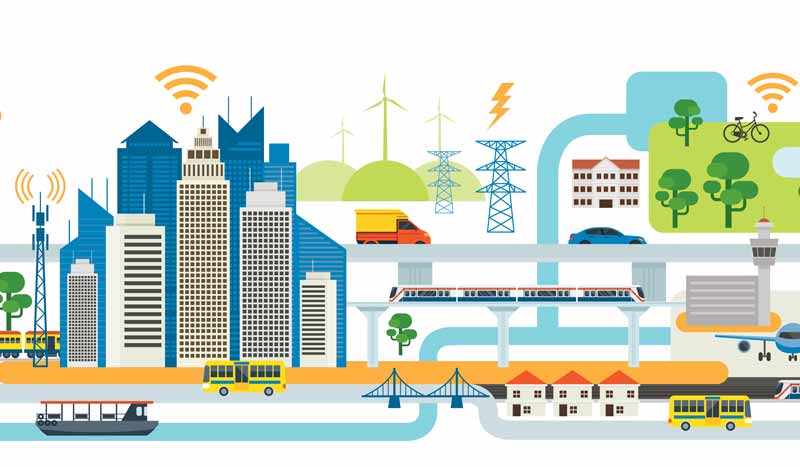
WELCOMING THE SMART CITY
Extending IoT implementation through to multiple sectors will then bring us to the Smart City, which could very well be the norm globally over in the next few years. Huawei Technologies has already partnered with more than 120 cities, spanning from China to Spain and even South Africa, to make this a reality in certain areas of the world, using its Smart City platform. Huawei’s Smart City platform covers the bases of what makes a city tick, offering solutions that range from the large scale of city management such as smart water management, parking management and smart street lamps; to the more community based and individual sectors of smart homes and locks, smart white goods and connected vehicles.
Here in Malaysia, Think City is an organisation that focuses on making urban spaces and cities more people-friendly, and as key players in the regeneration and redesign of major cities here, the data that can be obtained from a connected Smart City is priceless. As Managing Director of Think City, Hamdan Abdul Majeed says: “We are looking to harness public and proprietary alternative data sources to better understand cities and citizens. IoT can help city planners and managers break information silos and tap new sources of information and help increase understanding
of our cities. Deploying smart infrastructure allows the collection of data from various points, and this Big Data can then be analysed to paint a useful picture. Sensor-based management can be employed in so many areas, from flood mitigation to changing shading panels on buildings depending on the angle of the sun.
Smart homes could generate more energy than they consume using solar photovoltaic (PV) panels and channel excess power back into the grid. Homes with battery storage can also help smoothen the dips when solar PV output drops during rain or overcast days. Electric vehicle batteries can also function likewise when it is plugged into a smart grid or home,†adds Hamdan. In essence, welcoming a change that makes the city more connected also welcomes a greener and more sustainable way of living, as an integrated city not only allows carbon footprint monitoring, but also makes greener living a much more accessible option for the community at large.
One Malaysian company that’s ready to roll out the connected community is kipleHome, which utilises IoT to bridge the gap between residents and property management. From there, kipleHome offers a complete digitisation of typical residential spaces, from e-pass systems to facilitate security, as well as digital feedback forms and notice boards to speed up the rate of building maintenance and repair.
So how long till we start to see the smart city manifest before our eyes? Our guess is not long at all,
based on the successful examples that have already been deployed around the world. The recent launching of Xperanti IoT’s nationwide network last November is a good sign as any that we are just on the cusp of making Smart Cities a reality here. Murray Hankinson, Director at Xperanti IoT says: “IoT technology is already here (in Malaysia) and it’s ready for use. This is completely new in Malaysia and in the perspective of the greater good for the community, from managing productivity to resources, there’s something in IoT that can provide solutions. With Xperanti and Sigfox network deployment here, [Malaysia] receives a fitful, purpose-built, live and deployed open network, for anyone to work with.â€


